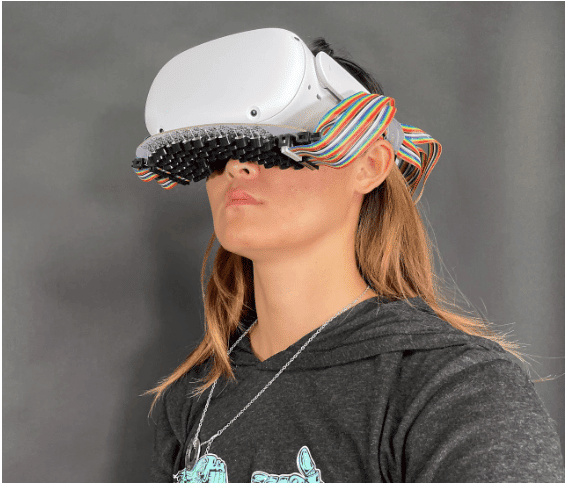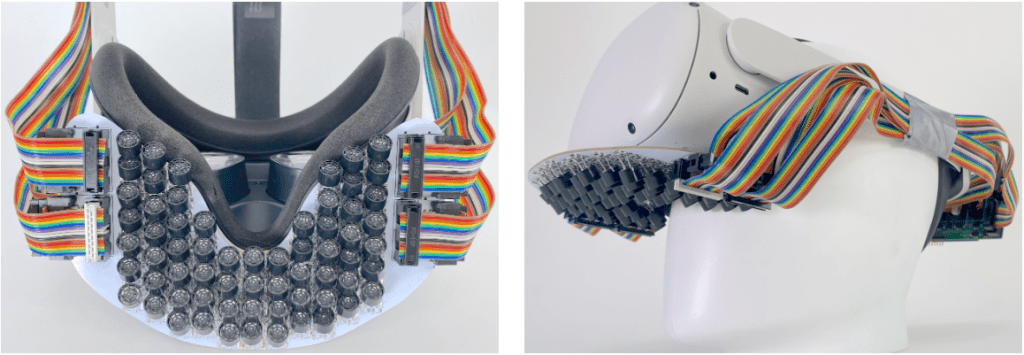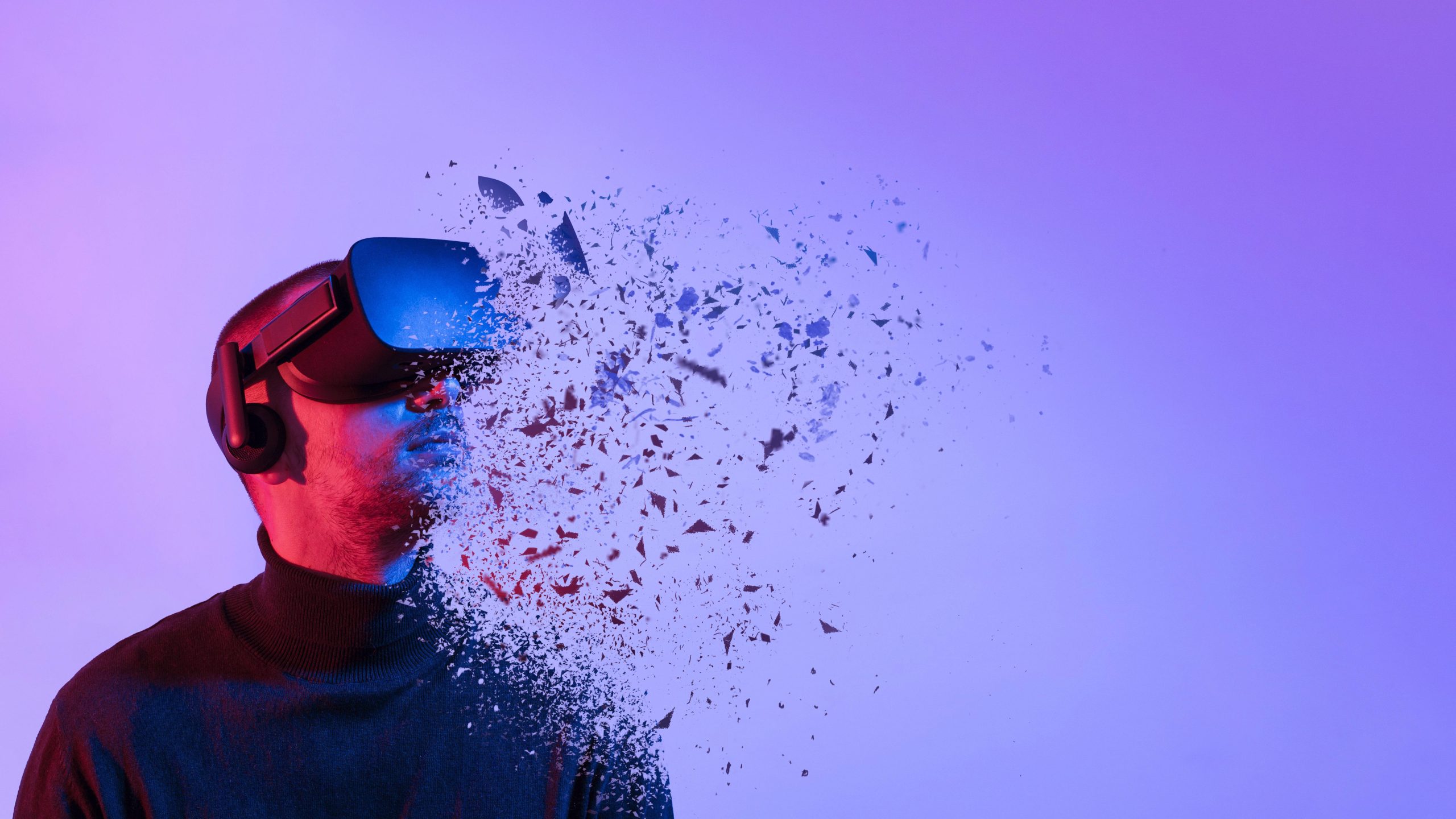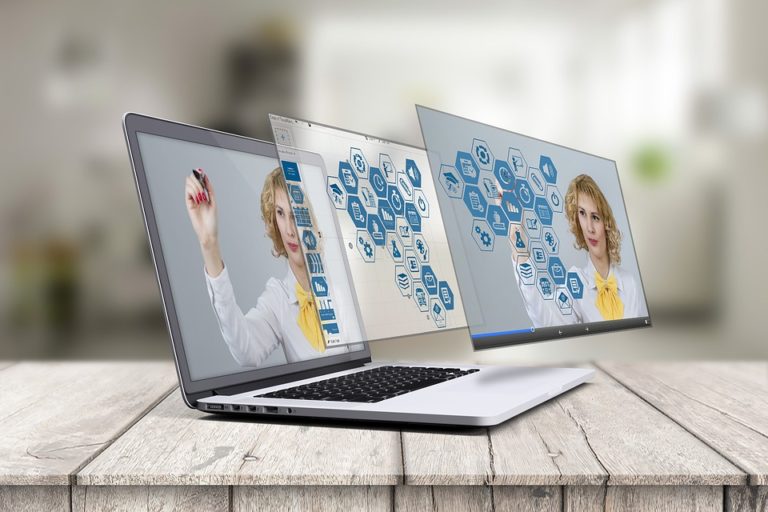In recent times, companies and technology development teams have been making great progress in virtual reality (VR) and augmented reality (AR) experiences, particularly with regard to visual and audio content. However, offering rich haptic sensations continues to be a major and open challenge.
Consumers increasingly want robust, integrated solutions that do not require additional devices or restrict freedom of movement. Although more sophisticated approaches exist (e.g. exoskeletons, haptic vests…), these have yet to see even modest consumer adoption.
In the future, it will be possible to kiss in the virtual realm. New virtual reality (VR) visor technology is ready to recreate the sensations in the metaverse.
This was announced by a team of scientists from the Future Interfaces Group at Carnegie Mellon University in Pennsylvania who modified a ‘Quest’ visor to transfer tactile perceptions to the mouth, one of the most sensitive parts of the body, second only to the fingertips.
Scientists have modified the virtual reality visor, creating a prototype ‘Oculus Quest 2‘, adapting it to haptic technology, i.e. simulating touch by applying forces, vibrations, movements, offering the opportunity to stimulate a variety of senses and thus also make a kiss come alive in a real way.
THE IMPORTANCE OF THE MOUTH
The researchers explained that until now the mouth has been largely overlooked as a haptic target in its haptic representation in VR and augmented reality (AR).
Apart from handheld controllers that occasionally vibrate, most virtual reality devices ignore senses such as taste, smell and touch, focusing instead on images and sound.
At the same time, equally important is the proximity of the mouth to the headset, which offers a significant opportunity to activate haptic effects in and around the mouth, without the need to run cables or wear an additional accessory. Consumers do not want to cover their entire face, nor do they want to put anything against (or inside) their mouth.
As far as AR is concerned, the industry is moving towards spectacle-like form factors in order to preserve facial expression as much as possible for human-to-human communication.
Also with regard to VR, consumer trend goes towards smaller headsets with the mouth exposed and free.

BUT HOW IS IT POSSIBLE TO BRING TACTILE SENSATIONS TO THE MOUTH THROUGH A VR VIEWER?
The solution lies in ultrasonic transducers, devices that convert oscillation of an electrical nature into mechanical vibration thanks to special piezoelectric ceramics inside them.
Going even more specific, the research team used this hardware to focus the acoustic energy carried by the air on the lips and in the mouth to simulate different sensations during a VR experience, creating sensations such as taps and continuous vibrations, such as those triggered by wind in the face, brushing the teeth or a kiss.
The experiment conducted by the Future Interfaces Group team focused on three different demos: forest, school simulation and racing game.
Transducers can do more than simulate a gentle touch.
In addition to the lips, the effects can also be felt on the teeth and tongue and, when combined with coordinated graphic feedback, increase realism and immersion.
They also released a series of sensory demonstrations, including raindrops, smoking a cigarette, feeling the rain and wind or drinking a cup of coffee or water from a drinking fountain, mud splashes, a hike through a spooky forest where one can feel cobwebs on one’s face, a ride where the user can feel the wind in their face and even virtual eating experiences where food and drink can be felt inside the mouth.

At the end of the experiment, participants filled out a survey, the final result of which showed that mouth haptics increased the realism of immersion and other important factors in virtual reality experiences.
Although haptics in the air using phased array ultrasound is not new, the group of scientists were the first to integrate the technology into a headset for use on the mouth and explore the rich space of applications.
Who knows if, as leaked by rumors, through this technology it will be possible to simulate kissing in a shared online space and even create the world’s first virtual reality kissing booth!
The AR MARKET team is available to offer advice on AR and VR technologies and development of immersive experiences.




